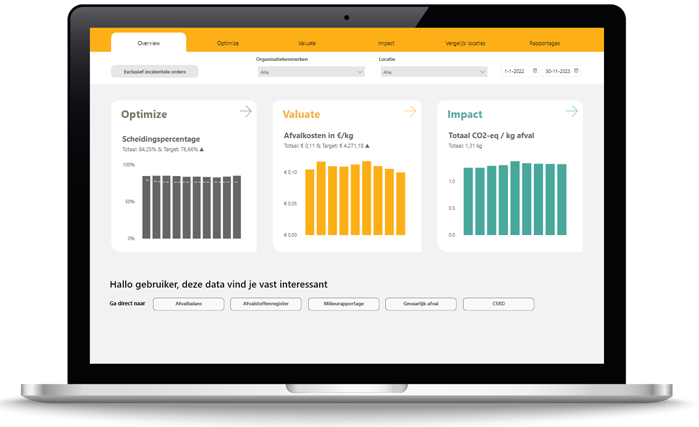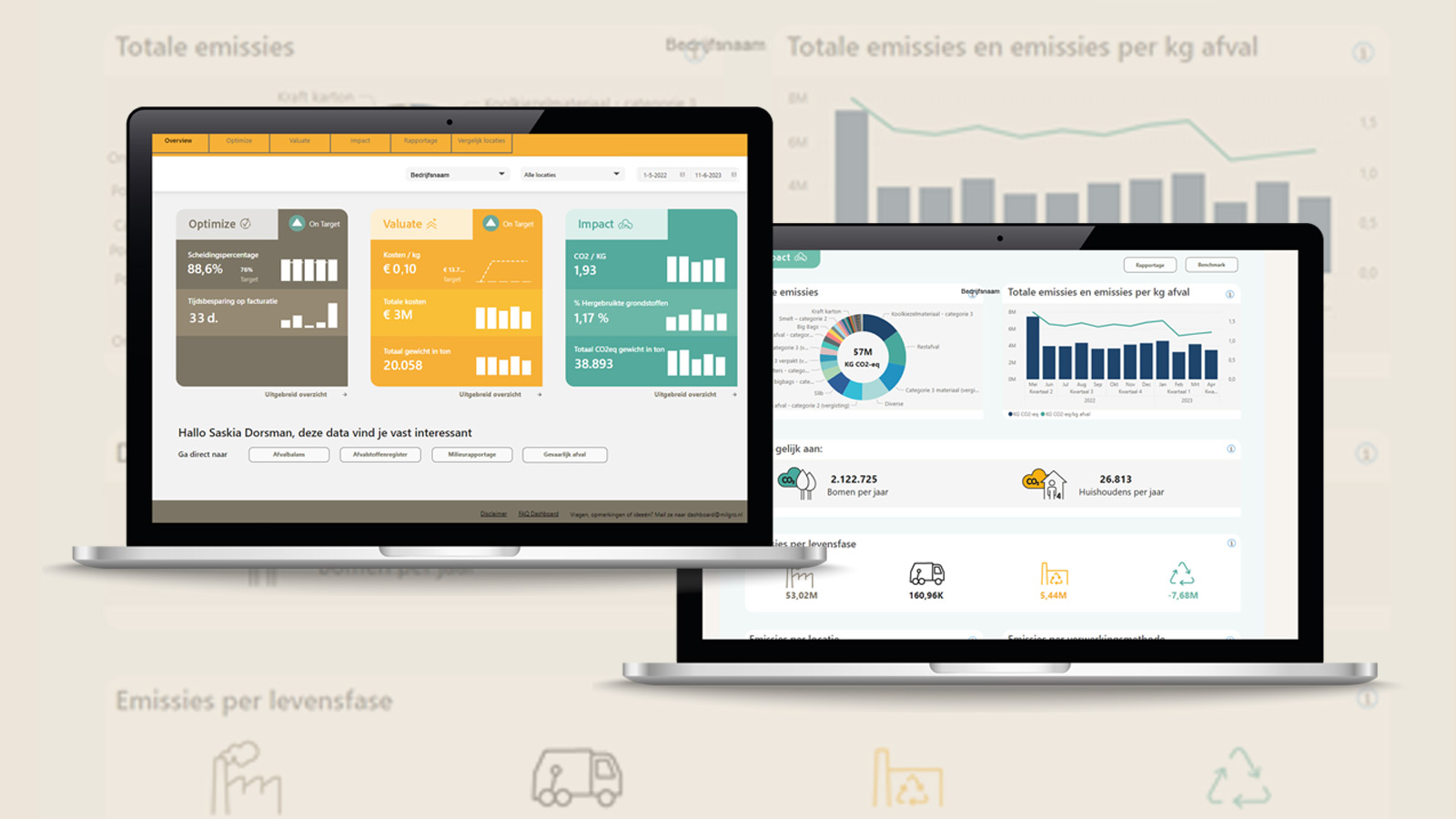The new European Corporate Sustainability Reporting Directive (CSRD) is going to require a new group of companies to report transparently on sustainability. And therefore also about waste and resource management. Through Milgro's online dashboard you can quickly get the data and information on these topics. This helps you to meet the new obligations.
The CSRD is a new European reporting directive and aims to make corporate sustainability information better, more transparent and comparable. The reporting directive is part of the European Green Deal. That is a large package of measures to make Europe the first continent in the world to become climate neutral by 2050.
The CSRD and the ESRS
With the CSRD comes an underlying reporting standard. That is the ESRS, which describes exactly which topics all have to be reported on. And how exactly. A chapter of that standard largely deals with topics in which Milgro is active: getting a grip on raw materials (streams) through smart waste management.
Dashboard Milgro easily unlocks mandatory waste data
It is about chapter E5; resource use and circular economy. This defines what kind of information is mandatory to be included in an annual report. Milgro has developed its online dashboard in such a way that it can easily display and unlock the information required for this criterion. This is how we help your organization become CSRD proof. In the ESRS criteria it is described very precisely, but it includes the following information on waste.
About the amount of waste
For example, it should at least clarify how much waste your organization produces. It also deals with the distinction between hazardous and non-hazardous waste. And how much of this can be reused or recycled. The report should also state how much of this waste is landfilled or incinerated.
The different waste streams
The reporting standard also calls for being clear about which types of waste streams are really relevant to the company. Consider an electronics manufacturer. There, e-waste is an important waste stream. For a restaurant, food waste is an issue. It also needs to describe what valuable materials are still in the waste that can be reused, such as metals, minerals or plastics.
And the calculation method
Finally, it describes the way waste quantities are calculated. And in particular, the criteria and assumptions used to label products as circular.
Stay informed
Stay up to date on all new developments? Follow us on LinkedIn or Instagram. Or subscribe to the newsletter. Are you curious about what Milgro can do for your operations and waste process? Contact us












